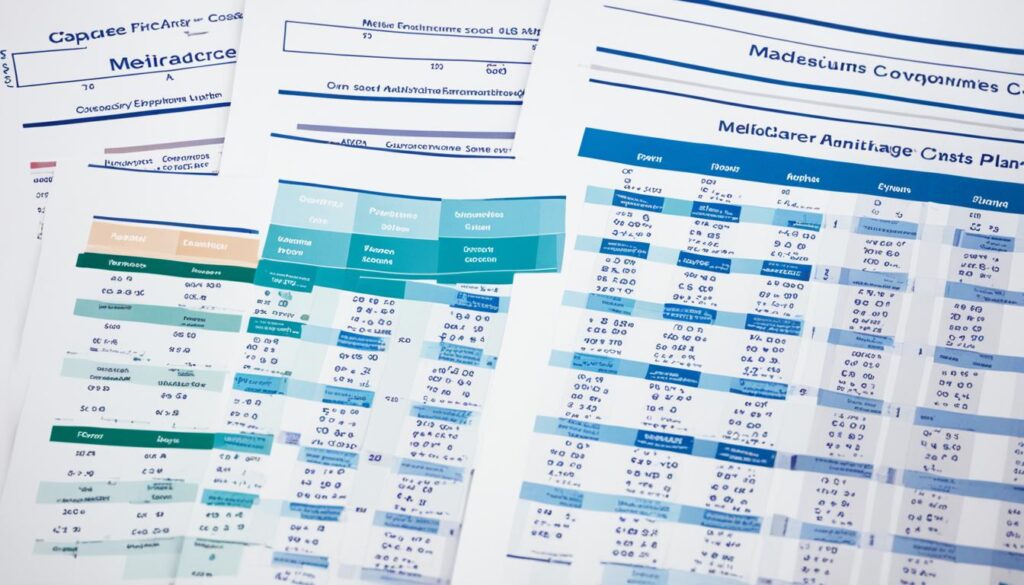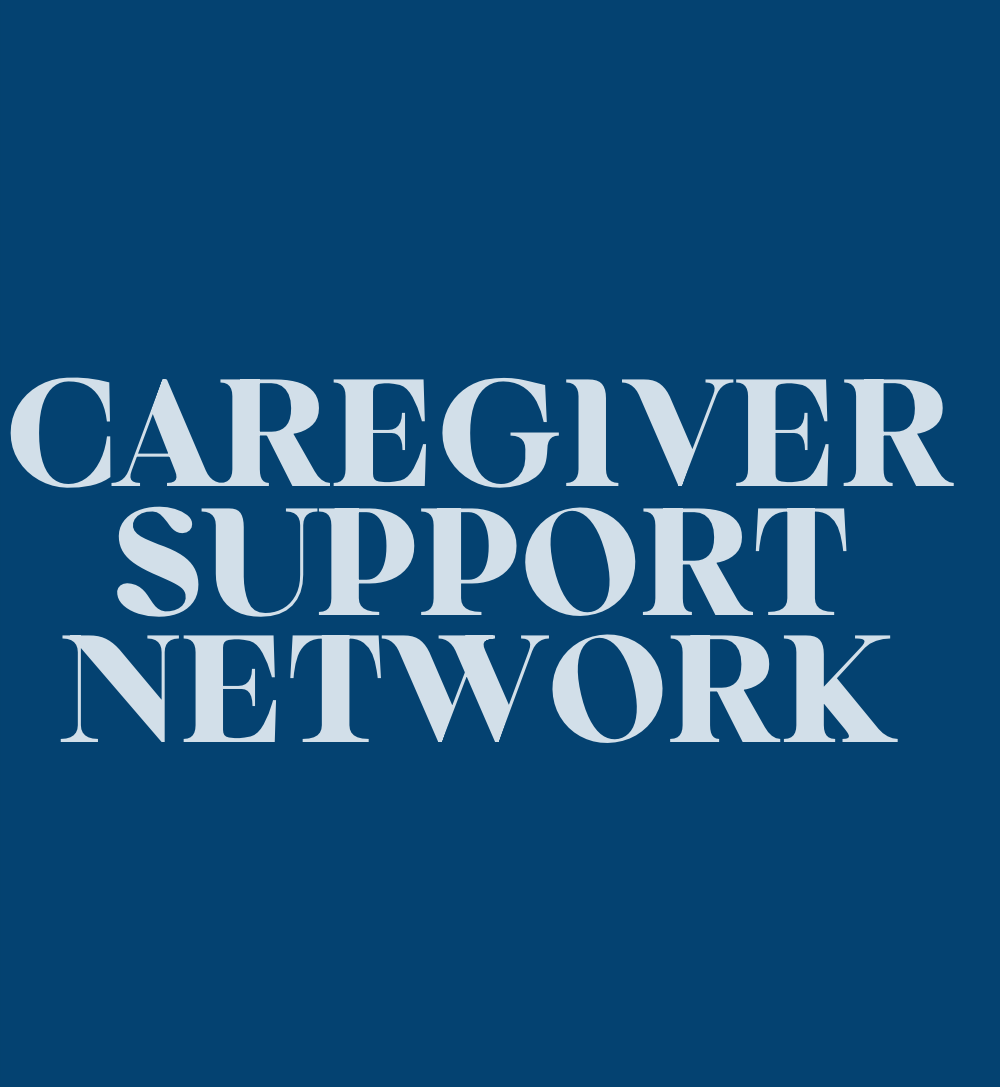Caregiver Tips
Gifts for Seniors
Journey through a world of thoughtful gift ideas for seniors, where each choice holds the promise of making a meaningful impact.

Selecting presents for senior citizens is often thought to favor the thought behind the gift rather than its price. Finding the perfect gift that combines practicality with sentimental value can truly be a rewarding experience.
From personalized keepsakes to innovative tech gadgets, the options are vast and varied. As we navigate the world of gift-giving for seniors, let's explore how these thoughtful gestures can truly make a difference in their daily lives.
Key Takeaways
- Personalized photo albums and memory books spark meaningful conversations and preserve cherished memories.
- Technology gifts like smart frames and easy-to-use mobile phones enhance connectivity for seniors.
- Keepsake items such as customized jewelry and engraved boxes hold special memories close.
- Relaxation gifts like weighted blankets and aromatherapy diffusers promote calmness and well-being.
Thoughtful Gift Ideas for Seniors
When selecting gifts for seniors, we aim to choose thoughtful items that cater to their needs and bring joy to their lives. Personalized photo albums make wonderful gifts, preserving cherished memories and sparking heartwarming conversations. Seniors appreciate the opportunity to relive special moments through photos, creating a sense of nostalgia and connection with loved ones.
Cozy fleece wrap shawls are practical and comforting gifts for seniors, offering warmth and convenience with their large front pockets for storing essentials. These shawls provide both physical comfort and a feeling of security, making everyday tasks easier and more enjoyable.
For those who enjoy technology, distressed wood digital photo frames are a modern twist on traditional photo displays. Seniors can effortlessly showcase their favorite pictures from smartphones, adding a touch of personalization to their living spaces while surrounding themselves with treasured memories.
Acupressure slippers are thoughtful gifts that promote relaxation and well-being for seniors. These slippers improve blood circulation and nerve sensitivity, providing comfort and therapeutic benefits for tired feet.
Lastly, The Bucket List book offers seniors a world of adventure and inspiration, encouraging them to explore new destinations and activities. This engaging book is a gift of endless possibilities, igniting a sense of curiosity and excitement for seniors looking to embark on new experiences.
Technology Gifts to Keep Seniors Connected

To help seniors stay connected and engaged, technology gifts play a crucial role in enhancing their daily lives and fostering communication with loved ones. Here are four fantastic options to consider:
- ViewClix Smart Frame:
This smart frame allows seniors to stay connected with digital photos and video calling features, making it easy for them to see and talk to family and friends regularly.
- Amazon Echo Show:
With voice-controlled assistance and video calling capabilities, the Echo Show enables seniors to interact effortlessly with technology, staying connected with just a voice command.
- Lively Easy-To-Use Mobile Phones:
These phones offer simplicity and functionality tailored for older adults, ensuring that staying in touch through calls and messages is straightforward and accessible.
- RAZ Memory Cell Phone:
Specifically designed to assist those with cognitive impairment, this phone simplifies calling by using pictures, providing a user-friendly way for seniors to stay connected even with memory challenges.
Keepsake Gifts for Special Memories
Keepsake gifts hold a special place in the hearts of seniors, preserving cherished memories and moments that they hold dear. Personalized photo albums offer a beautiful way for seniors to look back on special occasions and reminisce about happy times shared with loved ones.
Memory books or journals provide a customizable space for seniors to document their life stories, creating a legacy to pass down to future generations. Customized jewelry serves as a tangible reminder of significant people or events, bringing comfort and joy.
Engraved keepsake boxes not only offer a practical storage solution for treasured items but also hold sentimental value as they safeguard precious memories. Handwritten letters or cards add a personal touch to communication, fostering lasting connections and creating meaningful moments.
These keepsake gifts play a vital role in honoring the special memories and life experiences that have shaped seniors' lives, making them truly cherished treasures.
Gifts to Reduce Anxiety and Promote Relaxation

In our quest to find meaningful ways to support seniors in reducing anxiety and promoting relaxation, we explore a variety of thoughtful gift options tailored to enhance their well-being and peace of mind. Here are some items that can help achieve these goals:
- Weighted blankets: These blankets are known to reduce anxiety and promote relaxation by providing deep pressure stimulation, which can improve sleep quality and lower stress levels.
- Aromatherapy diffusers: Using essential oils, these diffusers create a calming atmosphere that can potentially reduce anxiety and promote relaxation, offering seniors a peaceful environment.
- Meditation apps: Seniors can benefit from mindfulness and relaxation techniques through meditation apps or CDs, aiding in anxiety reduction and overall well-being improvement.
- Indoor plants: Bringing nature indoors with indoor plants or gardening kits can offer seniors a sense of tranquility and relaxation, fostering a calming space in their living areas.
These gifts not only focus on anxiety reduction and relaxation promotion but also encourage mindfulness practice and creative expression, providing seniors with avenues for self-care and peace.
Gifts for Daily Comfort and Ease
Exploring ways to enhance seniors' daily comfort and ease, we present a selection of thoughtful gifts tailored to bring convenience and relaxation into their everyday lives. Seniors often appreciate items that make their daily routines more manageable and enjoyable. Here are some practical gift ideas that cater to their needs:
| Gift | Description |
|---|---|
| Cozy Fleece Wrap Shawl with Large Front Pockets | Priced at $17 on Amazon, this shawl provides easy access to necessities, keeping seniors warm and comfortable. |
| Acupressure Slippers | Available for $20 on Amazon, these slippers feature massage buttons to enhance blood circulation and nerve sensitivity, promoting relaxation. |
| Aromatherapy Shower Steamers | Priced at $17 on Amazon, these shower steamers offer a spa-like experience in the comfort of their own bathroom, aiding in relaxation. |
These gifts focus on key aspects such as comfort, relaxation, and accessibility, making seniors' daily lives more convenient and enjoyable. Whether it's a soothing massage, easy access to essentials, or a calming shower experience, these gifts aim to enhance their overall well-being and quality of life.
Frequently Asked Questions
Which Gift Is Best for Senior Citizens?
When selecting gifts for senior citizens, we consider their needs and preferences.
It's important to choose items that cater to their comfort, entertainment, and health.
We can recommend personalized photo albums for capturing memories, tech gifts like digital photo frames for a modern touch, cozy wrap shawls with pockets for convenience, engaging puzzle books for mental stimulation, and acupressure slippers for health benefits.
Each gift serves a specific purpose and can bring joy to seniors.
What Do Seniors Need the Most?
Well, what seniors need the most varies based on individual preferences and circumstances. However, in general, seniors often require practical items for support, comfort, and well-being. This can include mobility aids, relaxation tools, and wellness devices.
Additionally, sentimental gifts that evoke memories or personalized touches can be incredibly meaningful. Overall, a thoughtful combination of practical, sentimental, and personalized gifts can cater to seniors' needs and preferences effectively.
What Is a Good Gift for Adults Over 60?
We believe a heartwarming gift for adults over 60 is a personalized photo album. It captures cherished memories and celebrates family bonds.
These albums are a beautiful way to reminisce and share joy. Personal touches like this can truly make a difference in their lives.
What to Buy a 75 Year Old Woman?
When deciding what to buy a 75-year-old woman, it's important to consider items that cater to her interests and needs. Whether it's a cozy wrap shawl, relaxing acupressure slippers, a personalized photo album, a murder mystery puzzle book, or a tech-savvy digital photo frame, thoughtful gifts that cater to her preferences and lifestyle are key.
Taking the time to select a present that resonates with her will make the gift even more special.
Conclusion
As we carefully select gifts for our beloved seniors, let's remember that each item holds a special meaning. Like a delicate puzzle piece fitting perfectly into the grand design of their lives, our thoughtful gestures bring comfort and joy.
Let's continue to shower them with love and appreciation, filling their days with warmth and happiness. Our gifts aren't just material objects, but symbols of our enduring affection and care.
Caregiver Tips
Understanding Verbal Security Blankets Explained

Did you know that using certain phrases as verbal security blankets is crucial for individuals with dementia? These words or expressions provide a sense of comfort and safety, helping them navigate their surroundings. Whether it’s a simple statement like “I’m hungry” or a more significant phrase, these verbal security blankets empower them and assist in expressing their needs.
For caregivers, understanding and managing verbal security blankets can be challenging. While they provide comfort to individuals with dementia, they can also create frustration and stress. It’s important to recognize the signs and behaviors associated with verbal security blankets to better support our loved ones and provide the care they need.
Key Takeaways:
- A verbal security blanket is a phrase or group of words that individuals with dementia repeatedly express to cope with their surroundings and find comfort and security.
- Verbal security blankets can range from simple statements to more complex phrases with personal significance.
- They provide individuals with a sense of control and help them communicate their needs.
- Understanding and managing verbal security blankets can be challenging for caregivers but is essential for providing the necessary support and care.
- Recognizing the signs and behaviors associated with verbal security blankets can help caregivers better understand and respond to their loved ones’ needs.
What Is a Verbal Security Blanket in Dementia?
In dementia, a verbal security blanket serves as a coping mechanism for individuals to navigate their surroundings and find a sense of security and comfort. It helps them to express their needs, whether simple or complex, and communicate effectively with their caregivers and loved ones. Verbal security blankets play a crucial role in maintaining relationships by enabling individuals with dementia to engage in meaningful interactions.
How to Identify a Verbal Security Blanket in a Loved One with Dementia
Identifying a verbal security blanket in a loved one with dementia is crucial for caregivers to better understand and respond to their needs. By recognizing the common signs and behaviors associated with verbal security blankets, caregivers can provide the necessary support and comfort.
Common Signs and Behaviors
“Repeating the same word or phrase consistently, even in response to different questions or prompts, is a common sign of a verbal security blanket,” explains Dr. Jane Smith, a dementia specialist. “For example, if your loved one frequently says ‘I’m fine’ or ‘I don’t know’ regardless of the question, it could indicate the use of a verbal security blanket.”
In addition to repetition, individuals with dementia may have difficulty expressing their needs verbally. This can manifest as an inability to find the right words or an overall struggle to communicate effectively. Caregivers should pay attention to any expressions of anxiety or confusion that may be more prominent than usual, as these can also indicate the reliance on a verbal security blanket.
Common Signs and Behaviors Possible Explanation Repeating the same word or phrase consistently Using a verbal security blanket to find comfort and coping in their surroundings Difficulty expressing needs verbally Reliance on a verbal security blanket due to cognitive impairment Expressions of anxiety or confusion Seeking reassurance and security from a verbal security blanket
By being attentive to these signs and behaviors, caregivers can gain insights into their loved one’s emotional state and tailor their care accordingly. Understanding the role of verbal security blankets is an essential step in providing compassionate support for individuals with dementia.

Managing and Coping with a Verbal Security Blanket in Dementia
Successfully managing and coping with a verbal security blanket in dementia requires patience and understanding. Caregivers play a crucial role in providing support and comfort to their loved ones who rely on verbal security blankets to navigate their surroundings.
When responding to a repeated phrase, caregivers should exhibit patience and try to understand the context and meaning behind it. By showing empathy and compassion, caregivers can create a safe environment that encourages open communication and emotional connection.
Using distractions and redirects can be helpful in breaking the repetitive pattern and providing variety and stimulation. Engaging individuals with dementia in activities they enjoy or redirecting their attention to a different topic can help them focus on something other than the repeated phrase.
Seeking guidance from healthcare professionals, such as occupational therapists, can provide additional support and strategies for managing the use of verbal security blankets. These professionals have the expertise and experience to recommend personalized approaches that promote effective communication and enhance the overall well-being of individuals with dementia.
Expert Tip:
“When managing a verbal security blanket, it’s important to remember that the repeated phrase serves as a coping mechanism for individuals with dementia. Responding with patience, understanding, and compassion can create a sense of security and foster meaningful connections.” – Dr. Sarah Walker, Occupational Therapist

Implementing these strategies can help caregivers better manage and cope with a verbal security blanket in dementia. By providing a supportive environment and seeking professional guidance, caregivers can ensure the well-being and quality of life for their loved ones.
The Benefits of Verbal Security Blankets for Individuals with Dementia
Verbal security blankets offer several benefits for individuals with dementia. One of the significant advantages is the application of deep pressure stimulation, which can help reduce pain sensation, improve sleep quality, and alleviate symptoms of depression. These blankets provide a sense of comfort and security, allowing individuals to experience a higher level of well-being.
Deep Pressure Stimulation
The use of verbal security blankets involves deep pressure stimulation, a therapeutic technique that applies firm, gentle pressure to the body. This stimulation triggers the release of endorphins, which are known to reduce pain sensation, promote relaxation, and improve mood. By incorporating deep pressure stimulation into verbal security blankets, individuals with dementia can experience physical and emotional relief.
Reduce Pain Sensation
Research suggests that deep pressure stimulation can have a profound impact on reducing pain sensation. For individuals with dementia who may experience chronic pain or discomfort, the use of verbal security blankets can provide a soothing effect, helping to alleviate their suffering. The gentle pressure from the blankets can stimulate sensory receptors, reducing the brain’s perception of pain and increasing overall comfort.
Improve Sleep
Sleep disturbances are common among individuals with dementia, often leading to increased agitation and behavioral challenges. Verbal security blankets can play a crucial role in improving sleep quality. The deep pressure stimulation they provide helps regulate the body’s natural sleep-wake cycle, promoting a state of relaxation and aiding in the transition to sleep. By incorporating verbal security blankets into bedtime routines, individuals with dementia can experience more restful and rejuvenating sleep.
Reduce Symptoms of Depression
Dementia is often accompanied by symptoms of depression, including feelings of sadness, hopelessness, and loss of interest in activities. Verbal security blankets can contribute to the reduction of these symptoms by providing individuals with a sense of comfort and security. By offering a repetitive and familiar phrase or word, these blankets act as a source of emotional support, helping individuals with dementia feel more grounded and connected.
Summary of Benefits
| Benefits | Description |
|---|---|
| Reduced Pain Sensation | Deep pressure stimulation from verbal security blankets can help alleviate pain and discomfort. |
| Improved Sleep | Verbal security blankets promote relaxation and aid in improving sleep quality. |
| Reduced Symptoms of Depression | By providing comfort and emotional support, verbal security blankets can help alleviate symptoms of depression. |
Overall, verbal security blankets offer significant benefits for individuals with dementia, including deep pressure stimulation, pain reduction, improved sleep, and reduced symptoms of depression. Caregivers and healthcare professionals can leverage these benefits to enhance the well-being and quality of life for those living with dementia.

Strategies for Managing and Coping with a Verbal Security Blanket
Caregivers play a crucial role in effectively managing and coping with a verbal security blanket in individuals with dementia. By employing appropriate strategies, caregivers can provide the necessary support and comfort to their loved ones. Here are some key strategies to consider:
1. Respond with Patience and Understanding
When a person with dementia repeatedly expresses a verbal security blanket, it is essential to respond with patience and understanding. Recognize that these repetitive phrases serve as coping mechanisms for individuals in navigating their surroundings and finding comfort. Responding with empathy can help foster a sense of security and maintain a positive caregiver-patient relationship.
2. Use Distraction and Redirection
Breaking the repetitive pattern of a verbal security blanket can be achieved through the use of distraction and redirection techniques. Introduce engaging activities or topics to divert their attention from the repeated phrase. For example, you can engage them in a favorite hobby, discuss a pleasant memory, or play soothing music. By providing alternative stimuli, you can help create variety and stimulation, leading to reduced reliance on the verbal security blanket.
3. Seek Guidance from Healthcare Professionals
Healthcare professionals, such as occupational therapists, are valuable resources for caregivers seeking additional support and strategies tailored to the individual’s needs. These professionals can provide expert advice on managing verbal security blankets and offer techniques specific to the challenges faced by the person with dementia. Don’t hesitate to consult them to ensure the best possible care.
“Responding with empathy can help foster a sense of security and maintain a positive caregiver-patient relationship.”
Implementing these strategies can significantly improve the caregiver’s ability to manage and cope with verbal security blankets effectively. Remember, the goal is to provide comfort and support while fostering a sense of security and well-being for individuals with dementia.

Table: Strategies for Managing and Coping with a Verbal Security Blanket
Strategy Description Respond with Patience and Understanding Recognize the purpose of verbal security blankets and respond with empathy, fostering a positive caregiver-patient relationship. Use Distraction and Redirection Introduce engaging activities or topics to break the pattern of repetitive phrases, providing variety and stimulation. Seek Guidance from Healthcare Professionals Consult healthcare professionals, such as occupational therapists, for expert advice and tailored strategies.
Transitioning to a Learning Organization
To promote innovation and creativity within your company, it is crucial to transition to a learning organization. This involves creating an organizational culture that encourages employees to be creative, make suggestions, and experiment with new solutions. By fostering a culture of learning, your company can stay on the forefront of change and continuously adapt to new challenges and opportunities.
One of the key strategies for promoting a learning organization is investing in training and development opportunities. Providing employees with the chance to expand their knowledge and skills not only enhances their individual growth but also drives innovation and process improvements within the company. It empowers employees to think critically, take risks, and contribute new ideas.
In order to successfully transition to a learning organization, it’s important to establish clear goals and objectives. This includes defining what learning means within your company and aligning it with your overall business strategy. By setting specific learning objectives, you can focus on developing the skills and competencies necessary to drive innovation and creativity.
“A learning organization is an essential component of fostering innovation and creativity. By promoting a culture of continuous learning, companies can empower their employees to push boundaries, explore new ideas, and find innovative solutions to complex problems.”
Another crucial aspect of transitioning to a learning organization is embracing a growth mindset. Encouraging employees to view challenges as opportunities for learning and development will foster a culture of resilience and innovation. Leaders play a vital role in promoting this mindset by demonstrating a willingness to learn, adapt, and embrace change.
Furthermore, creating platforms for knowledge-sharing and collaboration can significantly contribute to the effectiveness of a learning organization. Encouraging cross-functional teams, organizing brainstorming sessions, and facilitating open communication channels allows employees to learn from one another, share ideas, and collaborate on innovative projects.
In summary, transitioning to a learning organization is key to promoting innovation and creativity within your company. By fostering a culture of continuous learning, providing training and development opportunities, and embracing a growth mindset, you can empower your employees to drive innovation and adapt to the ever-changing business landscape.
The Need for Change in the Manufacturing Company
The manufacturing company is in dire need of change due to various factors that hinder its growth and innovation. The current top-down management approach restricts employee creativity, decision-making, and experimentation, stifling the company’s potential for success. The hierarchical organizational structure discourages innovation and creates a lack of motivation among employees to contribute their ideas and suggestions.
Furthermore, the company’s outdated processes and software systems pose significant challenges to efficiency and effectiveness. The antiquated inventory management systems slow down operations and hinder the company’s ability to adapt to changing market demands. These outdated systems limit the company’s agility and hinder its potential for growth and improvement.
To address these challenges, the manufacturing company needs to embrace change and adopt a more flexible and inclusive management approach. This shift will empower employees to contribute their unique insights and ideas, fostering a culture of creativity and innovation. Additionally, investing in modern processes and software systems will enhance efficiency and enable the company to stay competitive in the ever-evolving market.
Key Challenges:
- Lack of employee creativity, decision-making, and experimentation due to top-down management
- Hierarchical organizational structure discouraging innovation and growth
- Outdated processes and software systems hindering efficiency and effectiveness
Addressing these challenges is crucial for the manufacturing company to thrive in a rapidly changing business landscape. By embracing change, adopting a more inclusive management approach, and modernizing processes and software systems, the company can unlock its full potential and achieve sustainable growth.

| Challenges | Impact | Recommended Actions |
|---|---|---|
| Top-down management approach | Limited employee creativity and decision-making | Transition to a more inclusive management style |
| Hierarchical organizational structure | Discourages innovation and stifles growth | Promote a culture of innovation and collaboration |
| Outdated processes and software systems | Challenges to efficiency and effectiveness | Invest in modernizing processes and software systems |
Planning for Change in the Manufacturing Company
As a change management consultant, your first task is to diagnose the need for change in the manufacturing company. This requires a comprehensive assessment of the current organizational structure, employee capabilities, and areas that require improvement. By understanding the existing challenges and opportunities, you can develop a change strategy tailored to meet the company’s specific needs.
Diagnostics involves analyzing various aspects of the company, including:
- The organizational structure to identify any hierarchical constraints that limit communication and innovation;
- Employee capabilities to gauge their readiness for change and identify any skills gaps;
- Operational processes and systems to identify outdated or inefficient practices;
- Market trends and customer demands to identify areas where the company needs to adapt to remain competitive.
Based on your findings, you can then develop a change strategy outlining the steps, resources, and timeline required for implementing the necessary changes. This strategy should be comprehensive and encompass all aspects of the company, from leadership and communication to training and technology upgrades.
Effective planning for change minimizes disruptions and ensures a successful transition. By developing a well-thought-out strategy, the manufacturing company can navigate the complexities of change with confidence.
Throughout the planning process, it’s crucial to collaborate closely with key stakeholders, including executives, department heads, and employees. By involving them in the planning stage, you can foster a sense of ownership and commitment, increasing the likelihood of successful implementation.
Remember, change is a journey that requires clear direction and careful navigation. By leveraging your expertise as a change management consultant, you can guide the manufacturing company through this transformative process, helping them embrace change and thrive in a dynamic business landscape.

Implementing Change in the Manufacturing Company
Implementing change in the manufacturing company requires a well-defined change management plan. This plan serves as a blueprint for navigating the transition and ensuring that the changes are implemented effectively.
Effective communication and training are key components of a successful change management plan. Clear and consistent communication helps employees understand the reasons for change, addresses any concerns or resistance, and fosters a culture of acceptance and collaboration.
Training plays a vital role in equipping employees with the necessary skills and knowledge to navigate the changes. It allows them to understand their role in the change process and empowers them to contribute effectively to the organization’s transformation.
Employee engagement is crucial during the implementation phase. By involving employees in the change process and soliciting their input, organizations can tap into their unique perspectives, ideas, and expertise. This fosters a sense of ownership and commitment to the change, increasing the chances of success.
“Change is the only constant in life.”
– Heraclitus
Benefits of Effective Change Implementation
Implementing change effectively in the manufacturing company can yield several benefits:
- Improved organizational agility and adaptability
- Increased employee satisfaction and motivation
- Enhanced productivity and efficiency
- Heightened innovation and creativity
- Strengthened competitive advantage
By embracing change and implementing it with a well-defined plan, effective communication and training, and employee engagement, the manufacturing company can navigate the transformation successfully and achieve positive outcomes.

Sustaining Change in the Manufacturing Company
In order to create lasting change within a manufacturing company, it is crucial to foster a culture of continuous improvement. This involves creating an environment in which employees are encouraged to seek opportunities for growth, innovation, and enhanced efficiency.
A key aspect of sustaining change is the regular feedback and evaluation of implemented changes. By soliciting input from employees and stakeholders, the company can gain valuable insights into the effectiveness and impact of the changes made. This feedback allows for necessary adjustments to be made and ensures that the change efforts remain aligned with the overall goals of the organization.
To facilitate ongoing learning and development, it is essential to establish mechanisms that support employee growth and engagement. This can include providing training programs, workshops, and mentorship opportunities. By investing in the continuous development of employees, the manufacturing company can ensure that they remain adaptable and responsive to future changes in the industry.
“Continuous improvement is not about the things you do well – that’s work. Continuous improvement is about removing the things that get in the way of your work. The headaches, the things that slow you down, that’s what continuous improvement is all about.” – Bruce Hamilton
To illustrate the importance of sustaining change in a manufacturing company, let’s consider an example:
Change Initiative Effectiveness Evaluation Adjustments Made Implementation of lean manufacturing principles Surveys were conducted to assess the impact on productivity and waste reduction Additional training sessions were held to address areas where employees required further support. Changes were made to the workflow based on feedback received. Upgrade of machinery and technology Key performance indicators were tracked to measure improvements in efficiency and quality Employee feedback was collected to identify any challenges or bottlenecks caused by the new technology. Adjustments were made to ensure smoother integration and minimize disruptions. Introduction of a suggestion box for process improvement ideas The number and quality of suggestions received were reviewed Regular feedback sessions were established to discuss submitted suggestions and implement viable ideas. Recognition programs were introduced to reward employees for their contributions.
By actively promoting continuous improvement, encouraging feedback and evaluation, and providing opportunities for ongoing learning and development, the manufacturing company can sustain positive change and remain competitive in an ever-evolving industry.

Conclusion
In conclusion, the management and understanding of verbal security blankets in dementia require patience, empathy, and the implementation of effective strategies. Caregivers can support their loved ones by identifying the signs and behaviors associated with verbal security blankets and providing the necessary comfort and assistance. Transitioning to a learning organization can foster innovation and creativity in the workplace, promoting growth and adaptability. For manufacturing companies, planning, implementing, and sustaining change is crucial in order to stay competitive and meet the demands of an ever-evolving business landscape.
In summary, by recognizing the importance of verbal security blankets in dementia care, caregivers can create a supportive environment that alleviates anxiety and promotes effective communication. Embracing a learning mindset can foster a culture of innovation and continuous improvement. For manufacturing companies, embracing change and implementing sustainable practices can lead to increased efficiency and productivity. By staying attentive to the needs of individuals with dementia and being open to change, both in caregiving and organizational contexts, we can create a better future for those affected by dementia and drive success in the ever-changing business world.
FAQ
What is a verbal security blanket?
A verbal security blanket is a phrase or group of words that individuals, particularly those with dementia, repeatedly express to cope with their surroundings and find comfort and security.
Why are verbal security blankets important?
Verbal security blankets provide individuals with a sense of control and help them communicate their needs. They can also offer comfort and security, promoting overall well-being.
How do I identify a verbal security blanket in a loved one with dementia?
Look for signs such as repeating the same word or phrase consistently, even in response to different questions or prompts. Difficulty expressing needs can also indicate the use of a verbal security blanket.
How can I manage and cope with a verbal security blanket in dementia?
Respond with patience and understanding, try to understand the context and meaning behind the repeated phrase, and use distractions and redirects to break the repetitive pattern.
What are the benefits of verbal security blankets for individuals with dementia?
Verbal security blankets can provide deep pressure stimulation, reduce pain sensation, improve sleep quality, and alleviate symptoms of depression. They also offer a sense of comfort and security.
What strategies can I use to manage and cope with a verbal security blanket?
Respond with patience and understanding, use distractions and redirects, and seek guidance from healthcare professionals, such as occupational therapists, for additional support and strategies tailored to your loved one’s needs.
How can my organization transition to a learning organization?
Foster a culture that encourages employee creativity, suggestions, and experimentation. Invest in training and development opportunities to drive innovation and process improvements.
What are the signs that my manufacturing company needs a change?
Look for a top-down management approach, limited employee creativity and decision-making, and outdated processes and software systems that hinder efficiency and effectiveness.
How do I plan for change in my manufacturing company?
As a change management consultant, diagnose the need for change, assess the current organizational structure and employee capabilities, and develop a change strategy outlining the steps, resources, and timeline needed.
How can I effectively implement change in my manufacturing company?
Develop a change management plan, communicate the reasons for change to employees, provide training opportunities, and engage employees throughout the process to address concerns and foster collaboration.
How can I sustain change in my manufacturing company?
Foster a culture of continuous improvement through regular feedback and evaluation. Establish mechanisms for ongoing learning and development to ensure employees remain engaged and adaptable to future changes.
Caregiver Tips
Easy Guide on How to Apply for Medicare

Navigating the Medicare application process can be daunting, full of complexities and unknowns. It’s a journey that many of us go through at some point, either for ourselves or our loved ones. Looking back on my first experience with Medicare, I remember feeling overwhelmed and unsure of where to start or how to ensure I was making the best choices.
But let me assure you, dear reader, that with the right information and guidance, the Medicare application process can become a manageable journey. And that’s exactly what we’re here to provide – a comprehensive, easy-to-follow guide that will lead you through each step of the process, ensuring that you have a clear path towards obtaining the healthcare coverage you need and deserve.
So take a deep breath, because we’re in this together. Let’s embark on this journey and empower ourselves with the knowledge and resources to successfully apply for Medicare.
Key Takeaways:
- Applying for Medicare can be complex, but with the right guidance, it can be done efficiently.
- Confirm your eligibility by meeting the age or disability requirements.
- Choose between Original Medicare or a Medicare Advantage plan.
- Apply for Medicare online through the Social Security Administration website.
- Be aware of the Medicare enrollment periods and avoid late enrollment penalties.
Confirming Your Eligibility for Medicare
Before you can apply for Medicare, it’s important to confirm that you meet the eligibility requirements. The eligibility requirements for Medicare include:
- Being age 65 or older: Medicare coverage is available to individuals who are at least 65 years old. This is the most common way to become eligible for Medicare.
- Being younger than 65 with a qualifying disability: If you are under 65 and have a qualifying disability, such as end-stage renal disease (ESRD) or certain other conditions, you may be eligible for Medicare.
- Having end-stage renal disease (ESRD): If you have permanent kidney failure requiring dialysis or a kidney transplant, you may be eligible for Medicare regardless of your age.
To determine when you’re eligible for Medicare and estimate your premium amount, you can use the Medicare.gov Eligibility & Premium Calculator. This helpful tool provides personalized information based on your individual circumstances.
| Eligibility Requirement | Description |
|---|---|
| Age 65 or older | Individuals must be at least 65 years old to be eligible for Medicare. |
| Younger than 65 with a qualifying disability | Individuals under 65 with certain disabilities may be eligible for Medicare. |
| End-stage renal disease (ESRD) | Individuals with permanent kidney failure requiring dialysis or a kidney transplant may be eligible for Medicare. |
Choosing Your Medicare Coverage
Now that you’ve confirmed your eligibility for Medicare, it’s time to choose the coverage option that best suits your needs. When it comes to Medicare coverage, you have two main options: Original Medicare (Part A and Part B) or a Medicare Advantage plan (Part C).
Original Medicare provides coverage for hospital stays (Part A) and outpatient care (Part B). With this option, you have the flexibility to see any healthcare provider or specialist who accepts Medicare, giving you more control over your healthcare decisions.
Medicare Advantage plans, on the other hand, are offered by private insurance companies approved by Medicare. These plans provide all the coverage of Original Medicare and often include additional benefits such as prescription drug coverage, vision, dental, and hearing services. Medicare Advantage plans may also offer different cost-sharing arrangements, so it’s important to carefully review the options available in your area.
In addition to considering Original Medicare and Medicare Advantage, you may also need to enroll in Medicare Part D for prescription drug coverage. Medicare Part D is offered through private insurance companies and helps cover the cost of prescription medications.
Comparing Original Medicare and Medicare Advantage
When deciding between Original Medicare and Medicare Advantage, it’s essential to consider your personal healthcare needs and preferences. To help you understand the key differences, here’s a comparison:
| Factor | Original Medicare | Medicare Advantage |
|---|---|---|
| Coverage | Hospital stays (Part A) Outpatient care (Part B) |
Includes all services covered by Original Medicare May include additional benefits like prescription drugs, vision, dental, and hearing services |
| Cost | Monthly premiums for Part B Additional costs for Part A if applicable |
Monthly premiums determined by insurance companies Additional cost-sharing arrangements may apply |
| Provider Network | Can see any healthcare provider who accepts Medicare | May be required to use network providers Potentially limited coverage when traveling |
| Prescription Drug Coverage | Requires separate enrollment in Medicare Part D | May be included in the Medicare Advantage plan |
Note: The above table provides a general overview. It’s important to review the specifics of each plan option available in your area to make an informed decision based on your unique healthcare needs.
To determine the right Medicare coverage option for you, consider factors such as your budget, preferred healthcare providers, and the prescription drugs you take. If you need assistance in comparing plans or understanding the fine print, consider consulting with a licensed insurance agent who specializes in Medicare.
Once you’ve chosen your Medicare coverage option, you can move forward with the application process and take the next step towards securing the healthcare coverage you deserve.
Applying for Medicare Online
Applying for Medicare has never been easier thanks to the convenience of online applications. With just a few simple steps, you can complete your Medicare enrollment from the comfort of your own home.
The Social Security Administration (SSA) is responsible for handling Medicare enrollment, and they offer a streamlined process for applying online through their website. To ensure a smooth application experience, it’s recommended to review the SSA’s Checklist for Online Applications before getting started.
Before you begin your medicare online application, make sure you have all the necessary information handy. You’ll need your personal details, such as your Social Security number, date of birth, and contact information. Additionally, you’ll need information about your current health coverage, including any employer or union coverage you may have.
The online application process typically takes between 10-30 minutes to complete. From entering your personal information to selecting your Medicare coverage options, the online form will guide you through each step. Once you’ve completed the application, you can submit it electronically with just a click of a button.

If you prefer a more traditional approach, you can still apply for Medicare in person at your local Social Security Administration office or by mail. However, applying online offers the convenience of instant submission and eliminates the need for postage or in-person visits.
By applying for Medicare online, you can save time and complete the enrollment process efficiently. Take advantage of this convenient option to ensure you don’t miss out on the essential healthcare coverage provided by Medicare.
Understanding Medicare Enrollment Periods
When applying for Medicare, it’s crucial to understand the different enrollment periods to ensure you don’t miss any important deadlines. Let’s take a closer look at these enrollment periods:
Initial Enrollment Period (IEP)
The Initial Enrollment Period (IEP) is a seven-month window surrounding your 65th birthday when you can first sign up for Medicare. It begins three months before the month of your 65th birthday and ends three months after the month of your 65th birthday.
Annual Enrollment Period (AEP)
Each year, from October 15th to December 7th, there is an Annual Enrollment Period (AEP) during which you can make changes to your Medicare coverage. This is the time to review your current plan, explore other options, and enroll in a plan that better fits your needs.
Special Enrollment Periods (SEPs)
In addition to the IEP and AEP, there are Special Enrollment Periods (SEPs) that allow you to make changes or enroll in Medicare outside of the regular enrollment periods. These SEPs are triggered by certain qualifying events, such as losing employer coverage, moving to a new location, or gaining or losing Medicaid eligibility.
It’s important to note that late enrollment into Medicare may result in penalties, so it’s best to sign up during the appropriate enrollment period. Missing deadlines could lead to higher premiums and delayed coverage.
To help you visualize the different Medicare enrollment periods, here’s a table summarizing the key details:
| Enrollment Period | Period Duration | Eligibility Requirements |
|---|---|---|
| Initial Enrollment Period (IEP) | 7 months | Turning 65 or eligible for Medicare due to disability or end-stage renal disease (ESRD) |
| Annual Enrollment Period (AEP) | October 15th to December 7th | Already enrolled in Medicare |
| Special Enrollment Periods (SEPs) | Varies | Qualifying events, such as losing employer coverage or moving |

By understanding the different Medicare enrollment periods and their importance, you can ensure you enroll in Medicare at the right time and avoid any unnecessary penalties. Stay informed, mark your calendars, and make the most of the available enrollment opportunities.
Avoiding Medicare Late Enrollment Penalties
At Medicare, we understand the importance of timely enrollment and the potential consequences of missing the deadline. By signing up for Medicare during your Initial Enrollment Period (IEP), you can avoid the Medicare late enrollment penalties that can be imposed for not enrolling on time.
The penalties for late enrollment can significantly impact your Medicare coverage and finances. They are added to your monthly premium and can result in higher costs and delayed coverage. It’s crucial to take action and enroll during your Initial Enrollment Period to avoid these penalties.
The specific penalties for not signing up for Medicare on time vary depending on the Medicare Part. Here’s a breakdown of the potential penalties:
- Medicare Part A: If you don’t enroll during your IEP and you’re not eligible for premium-free Part A, you may face a 10% increase in your monthly premium, which will be added for twice the number of years you were eligible but didn’t enroll.
- Medicare Part B: The penalty for late enrollment in Part B is a 10% increase in your monthly premium for each full 12-month period you were eligible but didn’t sign up, and you may have to wait for the General Enrollment Period to enroll, resulting in a gap in coverage.
- Medicare Part D: Late enrollment in Medicare Part D prescription drug coverage can result in a higher premium. The penalty is calculated based on the number of months you were eligible but did not enroll in a Part D plan.
Don’t let Medicare late enrollment penalties impact your coverage and financial well-being. Take advantage of your Initial Enrollment Period and be proactive in signing up for Medicare. By enrolling on time, you can ensure that you have the necessary coverage when you need it most.
To learn more about Medicare enrollment and to understand the specific penalties for each Medicare Part, visit the official Medicare.gov website. You can also consult with a licensed insurance agent who can provide personalized guidance and support throughout the enrollment process.
Takeaways
Signing up for Medicare during your Initial Enrollment Period (IEP) is essential to avoid late enrollment penalties.
The penalties for not signing up on time can result in higher monthly premiums and delayed coverage.
The specific penalties vary for each Medicare Part (A, B, and D).
Enroll on time to ensure you have the necessary coverage and avoid financial consequences.
Exploring Additional Medicare Resources
To better understand Medicare and make informed decisions, it’s helpful to explore additional Medicare resources.
One valuable resource is Medicare.gov, a comprehensive website that provides a wealth of information on costs, coverage, eligibility, and enrollment. It serves as a one-stop-shop for all your Medicare needs, providing detailed explanations and answers to frequently asked questions.
At Medicare.gov, you can access online tools such as the Medicare Plan Finder, which allows you to compare different plans and find the one that best meets your healthcare needs. This tool provides useful information on plan costs, coverage options, and benefits available in your area.
Additionally, Medicare.gov offers educational resources and guides to help you navigate the complexities of Medicare. These resources explain the different parts of Medicare, outline the enrollment process, and provide information on prescription drug coverage.
“Medicare.gov is an invaluable resource for anyone seeking Medicare information. It offers clear and concise explanations, making it easy to understand the basics of Medicare and make well-informed decisions.”
Another valuable resource is speaking with a licensed insurance agent who specializes in Medicare. These professionals can provide personalized guidance and assistance tailored to your specific needs. They can help you understand your coverage options, answer any questions you may have, and help you navigate the Medicare application process.
By leveraging these additional Medicare resources, you can enhance your understanding of the program, explore coverage options, and make informed decisions that best align with your healthcare needs.
Important Documents for Medicare Enrollment
When applying for Medicare, it’s crucial to have certain documents readily available to ensure a smooth application process. These documents are necessary to verify your eligibility and provide essential personal information. Below is a list of the important documents you may need:
- Birth certificate
- Driver’s license or state ID card
- Proof of U.S. citizenship or legal residency
- Social Security card
- W-2 forms (if still employed)
- Military discharge documents (if applicable)
Gathering these documents before starting your Medicare application will save you time and help ensure that you have all the necessary information on hand. Remember, having the right documents ready is essential for a hassle-free enrollment process.
Medicare Enrollment Steps for Adults Under 65
While Medicare is primarily available for individuals who are age 65 or older, there are some cases where individuals under the age of 65 may be eligible. These individuals typically have a qualifying disability or receive Social Security or Railroad Retirement Board disability benefits. The steps for applying for Medicare under 65 are similar to those for individuals age 65 and older, but it’s important to consult with the Social Security Administration or a licensed insurance agent for specific guidance based on your situation.
If you’re under 65 and believe you qualify for Medicare, follow these steps to apply:
- Gather the necessary documents: You’ll need personal identification documents such as your birth certificate, driver’s license or state ID card, proof of U.S. citizenship or legal residency, Social Security card, and any disability benefit documentation.
- Contact the Social Security Administration: Reach out to the Social Security Administration to schedule an appointment or inquire about the application process for Medicare under 65. You can visit their website or call their toll-free number for assistance.
- Submit your application: Complete the Medicare application form, providing accurate information about your eligibility and any disabilities or benefits you receive. Ensure all required documents are attached and submit the application as directed by the Social Security Administration.
- Follow up on your application: After submitting your application, keep track of its progress and follow up with the Social Security Administration if necessary. They may request additional information or documents to process your application.
Remember, the process for applying for Medicare under 65 may differ depending on your specific circumstances. It’s always a good idea to consult with the relevant authorities or seek guidance from a licensed insurance agent who specializes in Medicare to ensure you complete the process correctly and maximize your coverage.
| Steps for Medicare Enrollment Under 65 | Action |
|---|---|
| Gather necessary documents | Collect personal identification documents and disability benefit documentation. |
| Contact the Social Security Administration | Reach out to the Social Security Administration for guidance on the application process. |
| Submit your application | Complete the Medicare application form and attach all required documents. |
| Follow up on your application | Keep track of your application’s progress and provide any additional information requested. |
Note: The above information is a general guide and may not cover all circumstances. It’s advisable to consult with the Social Security Administration or a licensed insurance agent for personalized assistance.
Conclusion
Summing up the Medicare application process may initially seem like a daunting task, but armed with the right guidance and knowledge, it becomes a manageable endeavor. First and foremost, confirming your eligibility is crucial. Ensure that you meet the requirements based on age, disability, or end-stage renal disease. Once confirmed, carefully consider your coverage options – Original Medicare (Part A and Part B) or a Medicare Advantage plan (Part C) – and explore the additional benefits they offer, such as prescription drug coverage.
An essential step to streamline the application process is gathering the necessary documents, including your birth certificate, driver’s license or state ID card, and proof of citizenship or legal residency. Keep an eye on the enrollment periods, particularly the Initial Enrollment Period (IEP) and the Annual Enrollment Period (AEP), to avoid late enrollment penalties. Remember, missing these deadlines can result in higher premiums and delayed coverage.
Don’t hesitate to take advantage of the wealth of resources available for navigating Medicare. Medicare.gov is a comprehensive platform that provides information on costs, coverage, eligibility, and enrollment. You can use their online tools, such as the Medicare Plan Finder, for personalized information and assistance. If you need additional guidance, consider reaching out to a licensed insurance agent who can provide tailored advice based on your specific needs and circumstances.
By following these steps, you can successfully navigate the Medicare application process and secure healthcare coverage that meets your needs. Don’t let the initial complexity overwhelm you. With the right information and resources, applying for Medicare can be a smooth and rewarding experience. Take control of your healthcare journey and ensure you have the coverage you need for a healthier future.
FAQ
How do I apply for Medicare?
To apply for Medicare, you need to confirm your eligibility and then choose your coverage option. Once you’ve done that, you can apply online through the Social Security Administration (SSA) website, in person, or by mail at your local SSA office.
What are the eligibility requirements for Medicare?
Medicare is available for individuals who are age 65 or older, younger than 65 with a qualifying disability, or individuals with end-stage renal disease (ESRD). You can use the Eligibility & Premium Calculator on Medicare.gov to determine if you meet the requirements.
What are my coverage options for Medicare?
You can choose between Original Medicare (Part A and Part B) or a Medicare Advantage plan (Part C). Original Medicare covers hospital stays and outpatient care, while Medicare Advantage plans are offered by private insurance companies and often include additional benefits like prescription drug coverage.
How do I apply for Medicare online?
You can apply for Medicare online through the Social Security Administration (SSA) website. Before applying, it’s recommended to review the SSA’s Checklist for Online Applications to ensure you have all the necessary information. The online application typically takes 10-30 minutes to complete.
What are the Medicare enrollment periods?
The Initial Enrollment Period (IEP) is the seven-month window surrounding your 65th birthday when you can first sign up for Medicare. There is also an Annual Enrollment Period (AEP) from October 15th to December 7th each year when you can make changes to your Medicare coverage. Special Enrollment Periods (SEPs) are available for certain qualifying events.
What are the penalties for late Medicare enrollment?
If you don’t sign up for Medicare during your Initial Enrollment Period (IEP), you may face penalties in the form of higher premiums and delayed coverage. The penalties can vary depending on the specific Medicare part (A, B, or D).
Where can I find additional Medicare resources?
Medicare.gov is a comprehensive website that provides information on costs, coverage, eligibility, and enrollment. You can also use Medicare’s online tools, such as the Medicare Plan Finder, to compare plans. Speaking with a licensed insurance agent can provide personalized guidance.
What documents do I need for Medicare enrollment?
When applying for Medicare, have documents like your birth certificate, driver’s license or state ID card, proof of U.S. citizenship or legal residency, Social Security card, W-2 forms, and military discharge documents (if applicable) ready.
How do adults under 65 apply for Medicare?
Adults under 65 may be eligible for Medicare if they have a qualifying disability or receive certain benefits. The steps for applying are similar to those for individuals age 65 and older, but it’s advised to consult with the Social Security Administration or a licensed insurance agent for specific guidance.
Caregiver Tips
Medicare Advantage Basics: Know Your Options

Let’s talk about something that is important to us: our well-being. We cherish the time spent with loved ones, the adventures we embark on, and the little joys that add meaning to our lives. But what happens when our well-being needs some help?
My name is Sarah, and like many of you, I’ve faced the challenge of navigating the complex world of healthcare. It can be overwhelming, confusing, and even scary at times. That’s why I want to share some important information with you today about Medicare Advantage, a healthcare option that could make a big difference in your life.
Medicare Advantage plans offer a variety of benefits, coverage options, and provider networks that can help you take control of your health and well-being. Whether you’re looking for comprehensive coverage, enhanced benefits, or cost-saving opportunities, Medicare Advantage has something for everyone.
Join me as we explore the basics of Medicare Advantage, understanding how it works, the different plan options available, the costs involved, and the eligibility requirements. By the end, you’ll have a clearer picture of how Medicare Advantage can fit into your healthcare journey.
Remember, our health matters, and having the right information can empower us to make informed decisions that positively impact our lives and the lives of our loved ones.
Key Takeaways:
- Medicare Advantage is a healthcare option that offers a variety of benefits, coverage options, and provider networks.
- Understanding the basics of Medicare Advantage can help you make an informed decision about your healthcare.
- There are different types of Medicare Advantage plans, each with its own rules, provider networks, and coverage options.
- Medicare Advantage may have different cost structures compared to Original Medicare, including premiums, copayments, and out-of-pocket limits.
- Enrollment in Medicare Advantage typically occurs during specific enrollment periods, and eligibility requirements must be met.
What is Medicare Advantage?
Medicare Advantage is a type of Medicare health plan offered by private companies that contract with Medicare. These plans provide Part A and Part B coverage, and many also offer Part D prescription drug coverage. Medicare Advantage plans may have different rules and cost-sharing structures compared to Original Medicare, and they may offer additional benefits that Original Medicare does not cover.
Medicare Advantage plans have gained popularity due to the added benefits and flexibility they offer. By enrolling in a Medicare Advantage plan, you can receive your Medicare coverage through a private insurance company of your choice. These plans are required to offer at least the same level of coverage as Original Medicare, but they often include additional benefits like dental, vision, and hearing services.
| Medicare Advantage | Original Medicare |
|---|---|
| Part A (Hospital Insurance) | Part A (Hospital Insurance) |
| Part B (Medical Insurance) | Part B (Medical Insurance) |
| Additional benefits (e.g., dental, vision, hearing) | Limited additional benefits |
| Prescription drug coverage (in most plans) | May require separate Part D plan |
| Out-of-pocket maximums and cost-sharing | Original Medicare does not have an out-of-pocket maximum |
Medicare Advantage plans offer individuals the convenience of having all their healthcare needs managed by a single insurance company. These plans often have networks of doctors, hospitals, and specialists that members must use to receive full benefits.
Medicare Advantage plans provide a comprehensive alternative to Original Medicare. They offer additional benefits and coordinated care through private insurance companies, giving you greater choice and flexibility in managing your healthcare.
It’s important to note that every Medicare Advantage plan is unique, so it’s essential to review and compare different plans to find the one that best suits your specific needs and budget. Keep in mind that you must continue paying your Part B premium, even if you’re enrolled in a Medicare Advantage plan.
How does Medicare Advantage work?
When you join a Medicare Advantage plan, the plan receives a fixed amount from Medicare to provide your healthcare coverage. This means that the plan is responsible for coordinating and delivering your Medicare benefits. However, it’s important to note that while the plan must follow Medicare’s rules, it can charge different out-of-pocket costs and have different network restrictions.
Medicare Advantage plans cover all of your Part A and Part B benefits, which include hospital stays, doctor visits, and medical services. In addition to these basic benefits, some Medicare Advantage plans also offer extra benefits that Original Medicare does not cover. These additional benefits can include vision, hearing, and dental services, as well as wellness programs, transportation assistance, and prescription drug coverage.
One important aspect of Medicare Advantage plans is that they have an annual limit on out-of-pocket costs. This means that once you reach this limit, the plan will cover 100% of the costs for covered services for the rest of the year. This provides you with financial protection and peace of mind.
“Medicare Advantage plans offer comprehensive coverage for your Part A and Part B benefits, and may include additional benefits like vision and dental services.”
It’s worth mentioning that each Medicare Advantage plan may have its own set of rules and guidelines, so it’s essential to review the specific details of the plan you are considering. This can include restrictions on the network of healthcare providers that you can use, as well as requirements for obtaining referrals or prior authorization for certain services.
Overall, Medicare Advantage offers a comprehensive and convenient way to receive your Medicare benefits. By choosing a plan that aligns with your healthcare needs and preferences, you can take advantage of the additional benefits and potential cost savings that these plans offer.
Types of Medicare Advantage plans
When it comes to Medicare Advantage, there are several types of plans to choose from, each offering unique benefits and features. Understanding these different plan types can help you find the one that best suits your healthcare needs. Let’s explore the various options:
1. Health Maintenance Organizations (HMOs)
HMO Medicare Advantage plans typically require you to select a primary care physician (PCP) who will coordinate your healthcare services. You will generally need a referral from your PCP to see specialists or receive certain treatments. HMO plans often have a network of providers you must use to receive coverage, except in emergencies.
2. Preferred Provider Organizations (PPOs)
PPO Medicare Advantage plans offer more flexibility when it comes to choosing healthcare providers. You do not need a referral to see a specialist, giving you greater autonomy in managing your healthcare. PPO plans typically have a network of preferred providers, but you are also covered if you choose to go out-of-network, although at a higher cost.
3. Private Fee-for-Service (PFFS) plans
PFFS Medicare Advantage plans allow you to see any healthcare provider as long as they accept the plan’s payment terms and conditions. These plans determine how much they will pay for services, and providers can choose to accept or decline these terms. With PFFS plans, you may have more freedom in choosing doctors and hospitals.
4. Special Needs Plans (SNPs)
SNP Medicare Advantage plans are designed to meet the unique healthcare needs of individuals with specific conditions or characteristics. Examples of SNPs include plans for those with chronic illnesses, institutionalized individuals, or dual-eligible beneficiaries who qualify for both Medicare and Medicaid. These plans offer specialized care and tailored benefits for their target population.
5. Provider Sponsored Organizations (PSOs)
PSO Medicare Advantage plans are offered by healthcare providers such as hospitals, medical centers, or physician groups. These organizations directly sponsor the Medicare Advantage plans they offer and may have their own network of providers. PSO plans often focus on coordinating care within their provider network to improve quality and efficiency.
6. Medical Savings Accounts (MSAs)
MSA Medicare Advantage plans combine a high-deductible health plan with a medical savings account. The plan deposits money into the savings account, and you can use these funds to pay for eligible healthcare expenses until you reach the deductible. Once the deductible is met, the plan provides coverage as specified in the policy.
Now that you have a better understanding of the types of Medicare Advantage plans available, you can start exploring the specific features and benefits offered by each plan type to find the one that best fits your healthcare needs.
Understanding Medicare Advantage costs
When considering Medicare Advantage, it’s important to understand the costs associated with these plans. Medicare Advantage plans may have different cost structures compared to Original Medicare, so it’s essential to be aware of the potential expenses you may encounter.
Medicare Advantage premiums: In addition to your Part B premium, you may be responsible for paying a monthly premium for your Medicare Advantage plan. Premium amounts can vary depending on the plan and the coverage it offers. It’s important to factor in these premiums when budgeting for your healthcare expenses.
Medicare Advantage copayments and coinsurance: Copayments are fixed amounts you pay for specific healthcare services, while coinsurance is a percentage of the cost you’re responsible for. These amounts can vary depending on the services you receive and the specific plan you choose. It’s crucial to review the details of your Medicare Advantage plan to understand the copayments and coinsurance amounts associated with different services.
Medicare Advantage out-of-pocket limit: Most Medicare Advantage plans have an annual out-of-pocket limit. This limit is the maximum amount you’ll have to pay for covered services within a calendar year. Once you reach this limit, the plan will typically cover 100% of the costs for the remainder of the year. It’s important to note that this out-of-pocket limit may not include prescription drugs or out-of-network services, so be sure to review your plan’s specific details.
By understanding these Medicare Advantage costs, you can make informed decisions about your healthcare and budget effectively. Consider your expected healthcare needs, budget, and desired level of coverage when comparing Medicare Advantage plans to find the one that best suits your unique situation.

| Costs | Description |
|---|---|
| Premiums | Monthly payments in addition to your Part B premium. |
| Copayments | Fixed amounts you pay for specific services or prescriptions. |
| Coinsurance | A percentage of the cost you’re responsible for. |
| Out-of-pocket limit | The maximum amount you’ll have to pay for covered services in a calendar year. |
Eligibility for Medicare Advantage
Medicare Advantage offers a variety of healthcare options for individuals seeking comprehensive coverage. To ensure that you meet the eligibility requirements and can enroll in a Medicare Advantage plan, it is important to understand the following:
Who can join Medicare Advantage?
To be eligible for a Medicare Advantage plan, you must have both Medicare Parts A and B. This means that you must be at least 65 years old or have a qualifying disability. Additionally, you must reside in the plan’s service area, which is typically determined by your zip code.
Medicare Advantage plans are designed to provide coordinated care and additional benefits beyond what Original Medicare offers. These plans are offered by private insurance companies that contract with Medicare to provide all your Medicare Part A and Part B benefits.
Medicare Advantage enrollment
Enrollment in a Medicare Advantage plan typically occurs during specific enrollment periods:
- Initial Enrollment Period (IEP): When you first become eligible for Medicare, you have a seven-month period to enroll in a Medicare Advantage plan. This includes the three months before your 65th birthday month, your birthday month, and the three months following your birthday month.
- Annual Enrollment Period (AEP): Occurs from October 15th to December 7th each year. During this period, you can join, switch, or discontinue a Medicare Advantage plan.
- Special Enrollment Period (SEP): May be available to individuals who experience certain qualifying events, such as moving out of the plan’s service area or losing other healthcare coverage.
It is important to note that each enrollment period has specific rules and deadlines that must be followed to ensure timely enrollment in a Medicare Advantage plan.
If you have questions about your eligibility or need assistance with the enrollment process, you can contact Medicare directly or speak with a licensed insurance agent who specializes in Medicare Advantage plans.
| Enrollment Period | Timeframe |
|---|---|
| Initial Enrollment Period (IEP) | Three months before your 65th birthday month, your birthday month, and the three months following your birthday month |
| Annual Enrollment Period (AEP) | October 15th to December 7th |
| Special Enrollment Period (SEP) | Varies depending on qualifying events |

Pros and cons of Medicare Advantage
Medicare Advantage plans offer a range of advantages that can enhance your healthcare coverage. These plans often include additional benefits beyond what Original Medicare provides, such as dental, vision, and hearing services. This can be particularly beneficial for individuals who require these services on a regular basis. Moreover, Medicare Advantage plans may offer lower out-of-pocket costs compared to Original Medicare, potentially saving you money in the long run.
However, it’s important to consider the potential drawbacks of Medicare Advantage as well. Network restrictions can sometimes limit your choice of healthcare providers, and you may need to stay within the plan’s network to receive full coverage. Additionally, certain Medicare Advantage plans may require referrals from primary care physicians for specialist visits, which can add an extra layer of administration to your healthcare journey.
It’s essential to weigh the pros and cons of Medicare Advantage to determine whether it aligns with your specific healthcare needs and preferences.
Advantages of Medicare Advantage:
- Additional benefits such as dental, vision, and hearing services
- Potentially lower out-of-pocket costs
- Option to bundle Part D prescription drug coverage
- Potential for coordinated care through a single plan
- Potential for cost savings through provider networks
Disadvantages of Medicare Advantage:
- Network restrictions limiting choice of healthcare providers
- Potential for increased administrative requirements, such as referrals for specialist visits
- Varied coverage across different plans and regions
- Restrictions on coverage outside of the plan’s service area
- Potential for plan changes on an annual basis
By carefully considering these pros and cons, you can make an informed decision about whether Medicare Advantage is the right choice for your healthcare needs. Remember to evaluate your specific requirements, preferences, and budget to ensure that you select the best Medicare coverage option for you.
Comparing Medicare Advantage with Original Medicare
When it comes to choosing your Medicare coverage, it’s important to understand the differences between Medicare Advantage and Original Medicare. Each option has its own set of benefits, costs, and limitations to consider. Let’s take a closer look at how these two options compare:
Coverage Options
Original Medicare consists of Part A (hospital insurance) and Part B (medical insurance). With Original Medicare, you have the freedom to see any doctor or visit any hospital that accepts Medicare. This gives you a wide range of choices and flexibility in managing your healthcare needs.
On the other hand, Medicare Advantage plans (also known as Medicare Part C) are offered by private insurance companies approved by Medicare. These plans combine the coverage of Part A and Part B, and often include additional benefits such as prescription drug coverage, vision, hearing, and dental services. However, Medicare Advantage plans typically have a network of preferred providers that you must use for the best coverage.
Cost Structures
With Original Medicare, you’ll typically pay a monthly premium for Part B coverage. You’ll also have deductibles, copayments, and coinsurance amounts for certain services. Supplemental insurance, such as a Medicare Supplement plan, can help cover these out-of-pocket costs.
Medicare Advantage plans may have different cost structures. Some plans may have lower monthly premiums than Original Medicare, while others may have higher premiums in exchange for additional benefits. Additionally, Medicare Advantage plans often have copayments and coinsurance for services, which can vary based on the plan and the specific services you receive.
Choosing the Right Option
When deciding between Medicare Advantage and Original Medicare, it’s important to consider your specific healthcare needs and preferences. Ask yourself questions like:
- Do I prefer the freedom to choose any provider or am I comfortable with a provider network?
- Do I require additional benefits like prescription drug coverage or dental services?
- How much am I willing to pay in monthly premiums and out-of-pocket costs?
By comparing the benefits, costs, and limitations of each option, you can make an informed decision about which Medicare coverage is best for you.
Remember, if you choose Original Medicare, you may want to consider enrolling in a Medicare Supplement plan to help cover the gaps in coverage. It’s also worth noting that you have the opportunity to switch between Original Medicare and Medicare Advantage during certain enrollment periods if your needs change.
Additional considerations for Medicare Advantage
When choosing a Medicare Advantage plan, there are a few additional factors to consider beyond the basics. These considerations can help you further narrow down your options and select the right plan for your healthcare needs.
1. Medicare Advantage network of providers
One important consideration is the network of healthcare providers associated with each Medicare Advantage plan. These networks consist of doctors, specialists, hospitals, and other healthcare professionals who have agreed to provide services to plan members at negotiated rates. It’s essential to ensure that the plan you choose includes the providers you prefer or currently see.
By staying within the plan’s network, you can maximize your benefits and potentially save on out-of-pocket costs. Outside of the network, the plan may not cover services or may require higher cost-sharing.
2. Extra benefits offered by Medicare Advantage
Medicare Advantage plans often provide additional benefits beyond what is covered by Original Medicare. These extra benefits can vary depending on the plan and may include services such as vision, hearing, dental care, wellness programs, and prescription drug coverage (Part D).
Before selecting a plan, it’s essential to review the additional benefits offered and determine if they align with your healthcare needs. For example, if you wear glasses or need regular dental care, a plan that includes these services may be advantageous for you.
3. Coverage for services not covered by Original Medicare
In addition to extra benefits, some Medicare Advantage plans may offer coverage for services that Original Medicare does not cover. These services may include fitness programs, alternative therapies, transportation assistance, and more.
Reviewing the plan’s coverage details can help you identify if any specific services you require are included. It’s essential to assess your individual healthcare needs and consider if these additional services would enhance your overall coverage.
Take the time to thoroughly research and compare Medicare Advantage plans, considering factors such as network providers, extra benefits, and coverage for additional services. This will allow you to make an informed decision and choose a plan that best meets your unique healthcare requirements.
How to enroll in Medicare Advantage
Enrolling in a Medicare Advantage plan is a straightforward process that begins with ensuring you are already enrolled in Medicare Parts A and B. Once you have Medicare coverage, you can join a Medicare Advantage plan during specific enrollment periods. Let’s explore the steps to enroll and the enrollment periods available.
-
Initial Enrollment Period (IEP): This is the seven-month period that begins three months before your 65th birthday month and ends three months after. It is the best time to enroll in Medicare Advantage as you have guaranteed access to any plan available in your area without the need to undergo medical underwriting.
-
Annual Enrollment Period (AEP): Also known as the Open Enrollment Period, this period occurs from October 15th to December 7th each year. During this time, you can join, switch, or drop a Medicare Advantage plan, giving you flexibility to choose the plan that best fits your needs.
-
Special Enrollment Period (SEP): SEP provides additional opportunities to enroll in Medicare Advantage outside of the IEP and AEP. You may qualify for an SEP if certain life events occur, such as losing employer coverage, moving out of your plan’s service area, or qualifying for a Low-Income Subsidy or Extra Help program.
Once you know which enrollment period applies to you, you can begin the process of joining a Medicare Advantage plan. This typically involves researching available plans, comparing their benefits, costs, provider networks, and additional services. You can then contact the plan directly or use the Medicare website to complete your enrollment.
Remember to ensure timely coverage, it is essential to enroll during the appropriate enrollment period and understand any deadlines. Being proactive and exploring your options will help you make an informed decision and select the Medicare Advantage plan that meets your healthcare needs and preferences.
If you’d like to learn more about Medicare Advantage enrollment periods, continue reading our Frequently Asked Questions section below.
Insert the following table:
| Enrollment Period | Timeframe | Who Can Enroll |
|---|---|---|
| Initial Enrollment Period | 3 months before 65th birthday month to 3 months after | All new Medicare beneficiaries |
| Annual Enrollment Period | October 15th to December 7th | Current Medicare beneficiaries |
| Special Enrollment Period | Varies based on qualifying events | Individuals experiencing specific life events |
Frequently asked questions about Medicare Advantage
As you explore your healthcare coverage options, you may have questions about Medicare Advantage. We’ve compiled some commonly asked questions to help provide the information you need to make informed decisions about your healthcare. Read on to find answers and additional details about Medicare Advantage.
1. What is Medicare Advantage?
Medicare Advantage, also known as Medicare Part C, is a type of Medicare health plan offered by private insurance companies. These plans provide all the benefits of Original Medicare (Part A and Part B) and may include additional benefits such as prescription drug coverage, dental, vision, and hearing services.
2. How does Medicare Advantage differ from Original Medicare?
Unlike Original Medicare, Medicare Advantage plans are offered by private insurance companies. These plans often have a specific network of doctors and hospitals you must use to receive the full benefits. Additionally, Medicare Advantage plans may have different costs, rules, and extra benefits compared to Original Medicare.
3. Can I still see my preferred doctor with Medicare Advantage?
The network of doctors and hospitals in a Medicare Advantage plan may have restrictions on which providers you can see. However, many plans offer out-of-network coverage for emergencies or special circumstances. It’s important to review the plan’s provider directory to ensure your preferred doctor or hospital is included.
4. How much does Medicare Advantage cost?
The costs of Medicare Advantage plans can vary depending on factors such as the plan’s premium, deductible, copayments, and coinsurance. Some plans may have lower monthly premiums but higher out-of-pocket costs, while others may offer higher premiums but lower out-of-pocket expenses. It’s important to review each plan’s cost structure to determine which best fits your budget and healthcare needs.
5. Can I switch from Original Medicare to Medicare Advantage?
Yes, if you are enrolled in Original Medicare (Part A and Part B), you have the option to switch to a Medicare Advantage plan during certain enrollment periods. These include the Initial Enrollment Period, the Annual Enrollment Period, and Special Enrollment Periods for qualifying circumstances. It’s important to note that you cannot have both Original Medicare and a Medicare Advantage plan at the same time.
6. What additional benefits are offered by Medicare Advantage?
Medicare Advantage plans often include additional benefits beyond what Original Medicare covers. These may include prescription drug coverage, dental, vision, hearing, and wellness programs. Each plan may offer different additional benefits, so it’s important to review the specifics of each plan you are considering.
| Benefits | Original Medicare | Medicare Advantage |
|---|---|---|
| Hospital Coverage (Part A) | ✓ | ✓ |
| Medical Coverage (Part B) | ✓ | ✓ |
| Prescription Drug Coverage (Part D) | ✓ | ✓ |
| Dental, Vision, and Hearing Services | No | ✓ |
| Wellness Programs | No | ✓ |
Conclusion
After exploring the ins and outs of Medicare Advantage, we can confidently say that it offers a range of options for individuals seeking Medicare coverage. By understanding the types of plans available, the associated costs, eligibility requirements, and the benefits they provide, you can make an informed decision about your healthcare coverage.
When evaluating Medicare Advantage plans, it’s crucial to consider your specific healthcare needs and preferences. Whether you prioritize lower out-of-pocket costs, access to a wide network of providers, or additional benefits like vision or dental services, there is a Medicare Advantage plan that can meet your requirements.
In conclusion, Medicare Advantage presents a unique opportunity to enhance your Medicare coverage and tailor it to your individual needs. By evaluating the different plans available and considering your healthcare priorities, you can embark on a healthcare journey that offers comprehensive coverage and peace of mind.
FAQ
What is Medicare Advantage?
Medicare Advantage is an alternative way to receive Medicare coverage through private companies that contract with Medicare. These plans provide Part A and Part B coverage, and many also offer Part D prescription drug coverage.
How does Medicare Advantage work?
When you join a Medicare Advantage plan, the plan receives a fixed amount from Medicare to provide your healthcare coverage. The plan must follow Medicare’s rules but can charge different out-of-pocket costs and have different network restrictions. Medicare Advantage plans cover all of your Part A and Part B benefits, and some plans may offer extra benefits like vision, hearing, and dental services.
What types of Medicare Advantage plans are available?
Medicare Advantage plans come in different types, including Health Maintenance Organizations (HMOs), Preferred Provider Organizations (PPOs), Private Fee-for-Service (PFFS) plans, Special Needs Plans (SNPs), Provider Sponsored Organizations (PSOs), and Medical Savings Accounts (MSAs).
How much does Medicare Advantage cost?
Medicare Advantage plans may have different cost structures compared to Original Medicare. You may be responsible for paying monthly premiums in addition to your Part B premium. Copayments and coinsurance amounts can vary depending on the services you receive. Most Medicare Advantage plans have an annual out-of-pocket limit to protect you from excessive costs.
Who is eligible for Medicare Advantage?
To be eligible for Medicare Advantage, you must have both Medicare Parts A and B. You must also live in the plan’s service area. Enrollment in a Medicare Advantage plan typically occurs during specific enrollment periods, such as the Initial Enrollment Period, the Annual Enrollment Period, or during a Special Enrollment Period.
What are the pros and cons of Medicare Advantage?
Medicare Advantage offers advantages such as additional benefits and potentially lower out-of-pocket costs. However, there are also disadvantages, such as network restrictions and limitations on providers. It is important to carefully consider the pros and cons when deciding whether Medicare Advantage is the right choice for you.
How does Medicare Advantage compare to Original Medicare?
Original Medicare allows you to see any doctor or hospital that accepts Medicare, while Medicare Advantage often requires you to use providers within the plan’s network. It is important to compare the benefits and costs of each option to determine which best meets your healthcare needs.
What extra considerations should I keep in mind for Medicare Advantage?
When choosing a Medicare Advantage plan, it is important to consider the network of providers available, as well as any extra benefits offered, such as vision, hearing, and dental services. Some plans may also offer coverage for additional services not covered by Original Medicare.
How do I enroll in Medicare Advantage?
To enroll in a Medicare Advantage plan, you must first be enrolled in Medicare Parts A and B. You can join a plan during your Initial Enrollment Period, the Annual Enrollment Period, or during a Special Enrollment Period if you qualify. It is important to understand the enrollment process and deadlines to ensure timely coverage.
What are some frequently asked questions about Medicare Advantage?
Some common questions include: What are the benefits of Medicare Advantage? How much does Medicare Advantage cost? Can I keep my current doctors with Medicare Advantage?
-

 Dementia Care2 months ago
Dementia Care2 months agoUnderstanding the Stages of Vascular Dementia: A Visual Chart Guide
-

 Dementia Care3 months ago
Dementia Care3 months ago10 Engaging Dementia Games for Cognitive Stimulation
-

 Dementia Care3 months ago
Dementia Care3 months agoHow Gabapentin Affects Dementia: A Comprehensive Guide
-

 Dementia Care3 months ago
Dementia Care3 months ago5 Things You Need to Know About Jack Nicholson’s Dementia
-

 Dementia Care1 month ago
Dementia Care1 month agoUnderstanding Narcissism and Dementia: A How-To Guide
-

 Dementia Care1 month ago
Dementia Care1 month agoHow to Deal with a Parent’s Dementia: A Practical Guide
-

 Dementia Care1 month ago
Dementia Care1 month agoDavid Suchet’s Wife Opens Up About Living with Dementia
-

 Dementia Care1 month ago
Dementia Care1 month agoUnderstanding the Link Between Ambien and Dementia: A How-To Guide



















